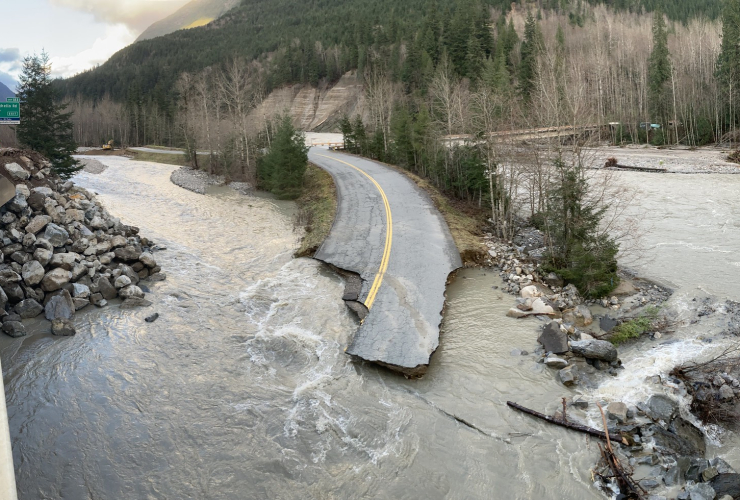The 800-metre race is both the longest sprint and the shortest endurance track event, with even experienced runners losing power heading into the final stretch.
In the House of Commons, the stretch from early February to late June is the political version of the 800-metres. MPs sit for about twice the number of days of debate than in the fall and, by the final weeks, often struggle to maintain pace and form.
Now this race has ended, it’s a good time to assess the progress made on environmental issues during the first half of 2022.
A quick look through House proceedings confirms the environment wasn’t a priority this year. In parliamentary debate, the pandemic topped the list of issues raised with 6,609 mentions. Convoy protests earned 2,765. Climate change and global warming? Just 371. Legislative efforts were likewise focused elsewhere — cybersecurity, online streaming and firearm safety.
In contrast, despite the pandemic, the environment was a stand-out priority of the previous parliamentary session. Canada’s Net-Zero Emissions Accountability Act received royal assent during the Senate’s final sitting hours after cross-party collaboration strengthened it in the House.
That same session also saw the long-awaited adoption of the United National Declaration on the Rights of Indigenous Peoples Act, as well as parliamentary consideration of other important government and private member’s bills focused on the environment — though many of the latter died on the order paper when Parliament was dissolved for last fall’s snap election.
One such bill proposed updates to the Canadian Environmental Protection Act (CEPA), including those to enshrine the right to a healthy environment and protect vulnerable populations and the environment against toxics. This session, the CEPA bill didn’t even garner the House’s attention. The government instead reintroduced it to the Senate.
Interestingly, it was the upper chamber — sometimes painted as sleepy or even obstructionist — where much of the parliamentary action happened this session. The Senate’s Energy and Environment Committee passed dozens of amendments to the CEPA bill, many of which strengthened it. Sen. Rosa Galvez advanced the high-profile Climate Aligned Finance Act to comport financial flows from publicly regulated institutions with the Paris climate targets, and Sen. Marty Klyne introduced the Jane Goodall Act, which includes measures to combat illegal wildlife trade. Perhaps most excitingly, the Senators for Climate Solutions group got underway, signalling a new political determination to advance collaborative cross-partisan climate leadership.
While debates in Parliament often soak up much of the attention, considerable progress happens outside the legislative branch through regulation and other policy. This spring saw the government’s first Emissions Reductions Plan (received with mixed reviews, particularly for its inadequate funding and light touch on the oil and gas sector) and the issuance of Canada’s first Green Bond, which rapidly raised $5 billion to finance climate initiatives.
The government announced new single-use plastics regulations and finalized the Clean Fuel Standard, mandating future limits on the carbon intensity of liquid fuel. Policymakers also launched consultations on the design of a new Clean Electricity Standard and a regulation to reduce oil and gas methane pollution by 75 per cent by 2030. A lengthy list of spending measures was also promised or delivered.
On the flip side, the government also used its executive powers to make decisions aimed at winning over voters in politically pertinent regions, perhaps hoping environmentalists will forget by election time. Among them: permitting the $9.4-billion Bay du Nord project and a $10-billion loan guarantee for the TMX pipeline expansion, with its new $21.4B price tag (double original projections).
Looking ahead to the return of Parliament, scheduled for Sept. 19, we can expect a boost in political energy for the environment. The CEPA bill will return to the House of Commons, where it will have the opportunity to be further strengthened (though will likely face strong and inevitable industry efforts to roll back the Senate’s amendments).
We should see much-anticipated Just Transition legislation to support communities and workers in the energy sector as society moves off fossil fuels. The House Environment Committee will also have an opportunity to consider Elizabeth May’s private member’s Bill C-226, the latest effort to develop a national strategy on environmental racism.
The fall economic statement should provide detail on big-ticket measures announced in the spring budget, particularly the $15-billion, five-year Canada Growth Fund (intended to leverage $125 billion to $140 billion per year in private investment for emission reductions, low-carbon industry development, and more) and the cleantech investment tax credit of up to 30 per cent for solutions like battery storage and clean hydrogen.
There are also two major international environmental gatherings coming up later this year: the UN Climate Change Conference (COP27) in Egypt in November, and the UN Biodiversity Conference (COP15) in December, which will be hosted by China but take place in Montreal.
This fall, as a result, will offer ample opportunity for parliamentarians to take part in a different kind of race — one to address the most serious interlocking threats to our planet. Let’s hope MPs catch their breath over the summer because this event will demand the best of their speed and stamina.
Sarah Van Exan is the executive director of GreenPAC (@GreenPACdotca), a national non-profit that works to activate, inspire and amplify environmental leadership in politics. She has worked with or for all levels of government, managing environmental policy, governance and justice files, and with non-profits to accelerate the transition to a net-zero economy.
If I am correctly
If I am correctly understanding how Parliamentary debate works and if the sample size that I saw is reflective, then all I saw was Conservatives grandstanding with over the top theatrics, a lot of faux outrage and precious little substance. Our official opposition has no apparent regard for environmental issues. But they are experts at childish and boorish antics of drowning out Liberal responses to questions they pose to the thunderous applause from their own side. Seemingly, they believe the Canadian public only deserves to hear their precious questions, but do not deserve to hear the Liberal response. Perhaps the Conservatives (out of focus) focus had something to do with why the environment came up so infrequently?
I agree; sitting in that
I agree; sitting in that chamber looks like an intolerable ordeal, an endurance test for anyone who's serious about the concept of the place; you can see it on their faces. You have to empathize with members of parliament who have been there a long time, including Trudeau. How do they stand it I wonder?
Bottom line, it's all conservatives have to offer generally--- braying intransigence. They are quite simply horrible people, the worst among us, basically the trucker convoy in suits.






Comments